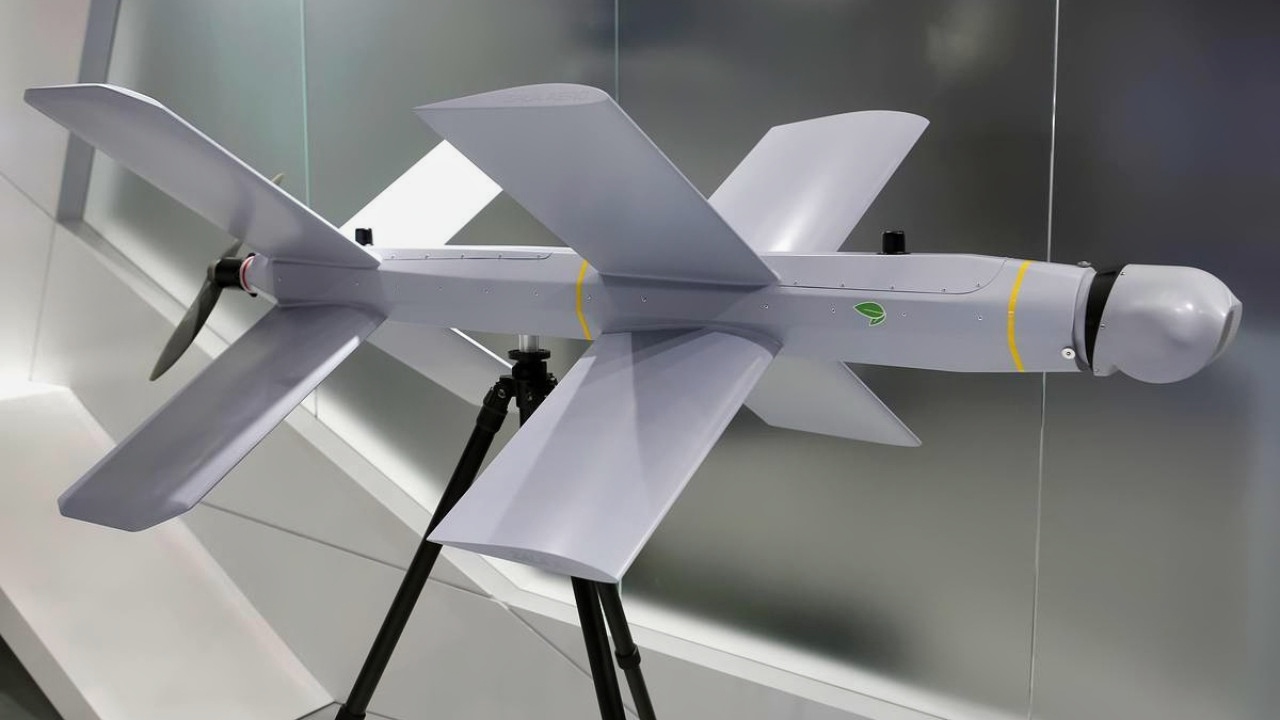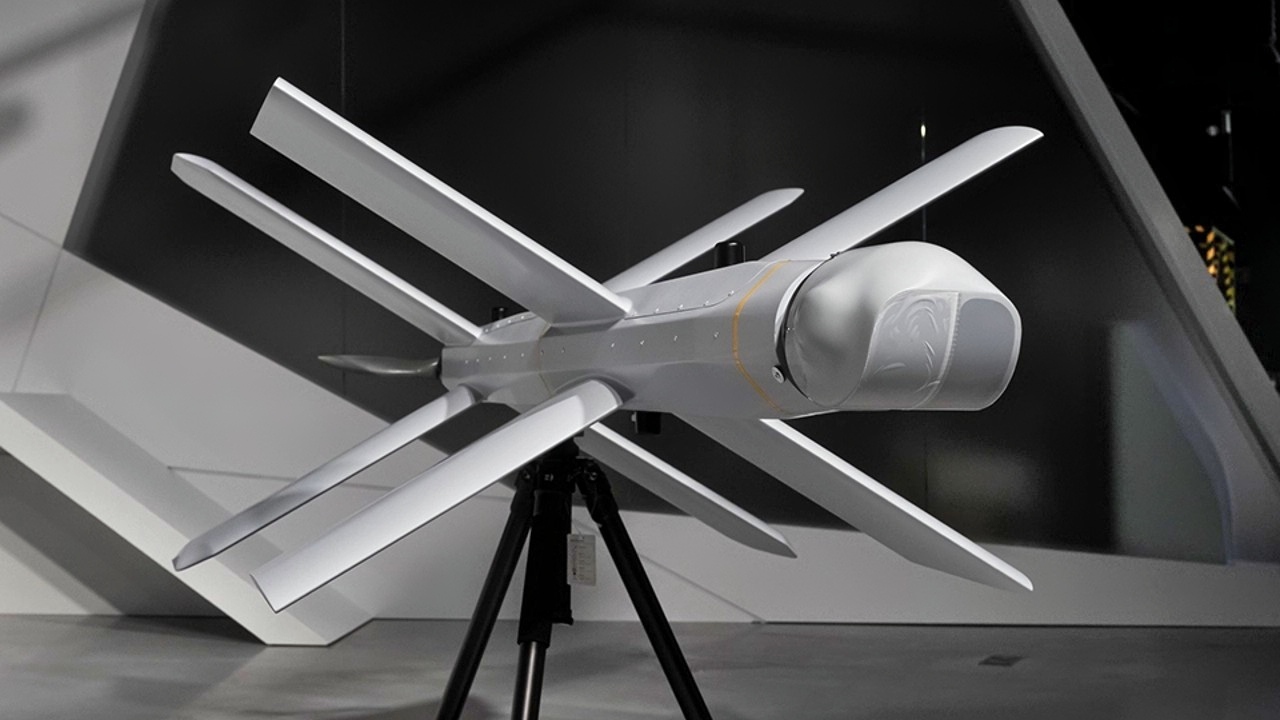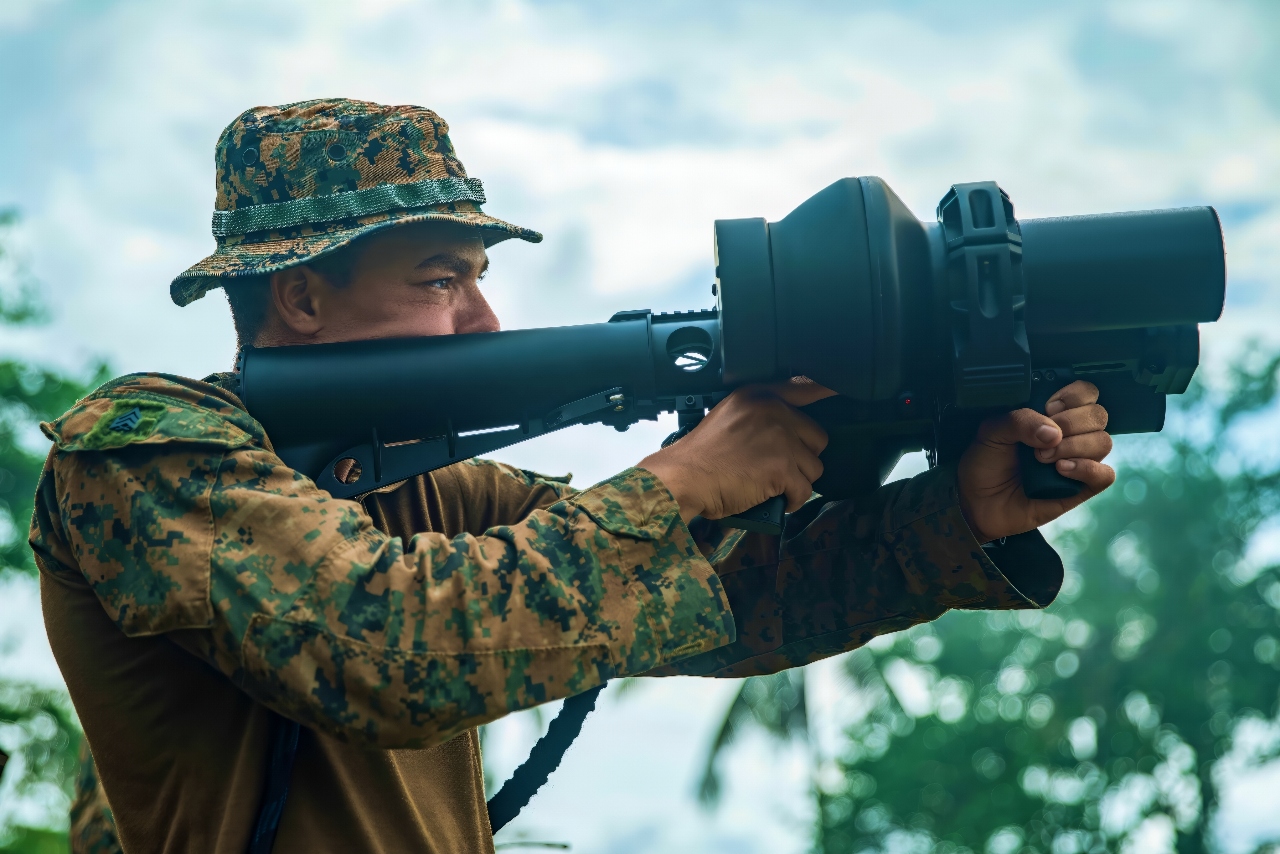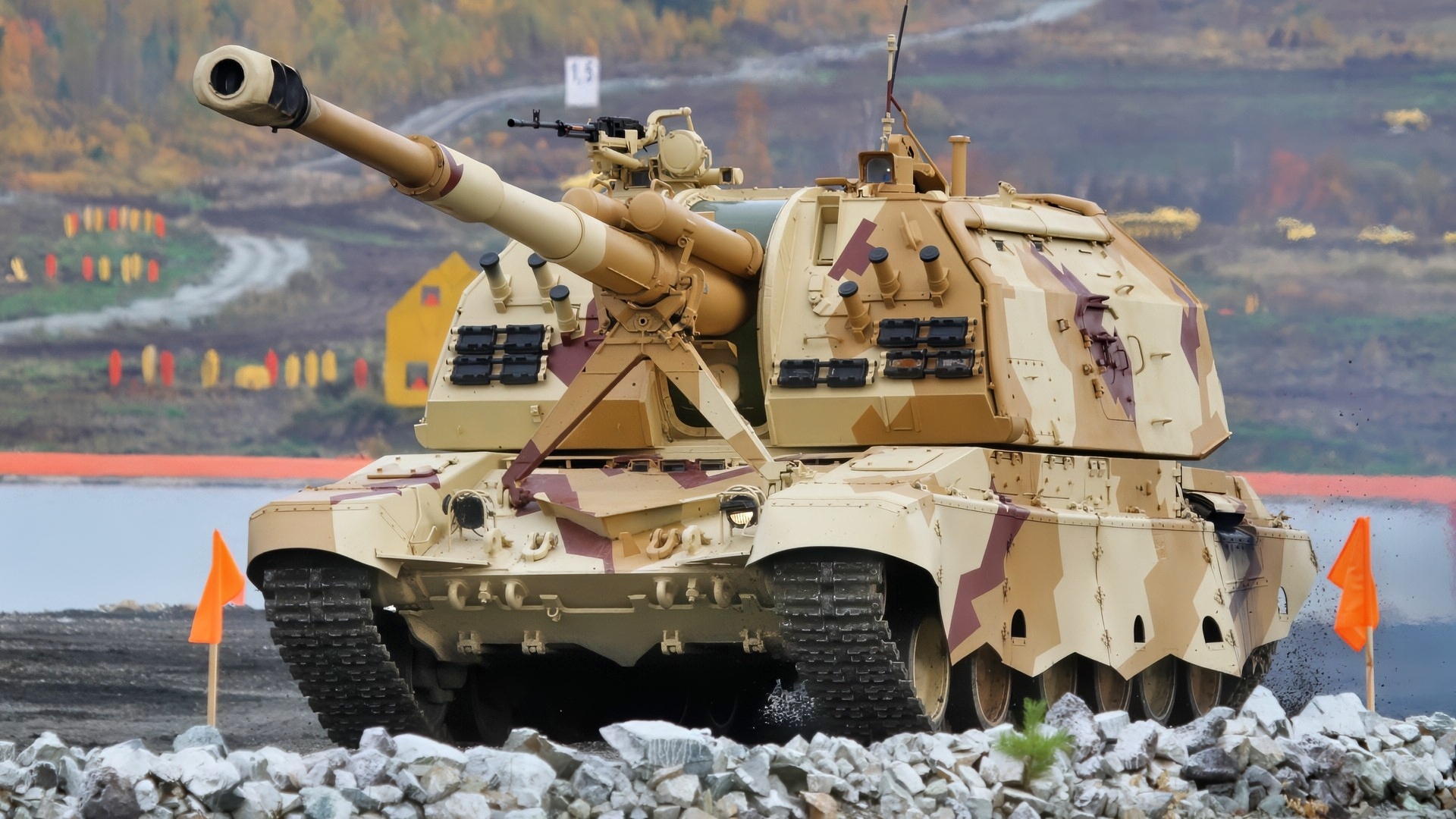Key Points and Summary – A new report reveals China is “materially helping” Russia’s war in Ukraine by massively increasing exports of critical drone components.
-While Beijing claims neutrality by reducing exports of fully-assembled drones, a surge in shipments of fiber-optic cables and lithium-ion batteries to Russia tells a different story.

Lancet Drone. Image Credit: Russian State Media.

Lancet Drone from Russia. Image Credit: Creative Commons.
-This flood of components has allowed Moscow to dramatically scale up its domestic production of jamming-resistant drones.
-As a result, Russia is now overwhelming Ukrainian defenses and logistics behind the front lines, seizing the advantage in the crucial drone war and costing “uncountable” Ukrainian lives.
China is Supplying the Drone Tech Russia Uses to Kill Ukrainians
After proving that it was achieving technological superiority in drone warfare, Ukraine began losing the edge against the Russian military. It did not happen because Ukraine suddenly slowed down its industrial effort or because Russian industry achieved some game-changing breakthrough.
It occurred due to an overnight surge in support from Russia’s long-time allies in the People’s Republic of China (PRC).
“China has materially helped Russia gain a key battlefield advantage in its grinding war against Ukraine, dramatically increasing exports over the summer of key components needed to make the fiber-optic drones that have enabled Moscow to overwhelm Ukrainian defenses on the front lines,” reads a report today in the Washington Post.
“If you look how the frontline changes, [Russia takes] territory by chunks that equal the distance fiber-optic drones can fly,” Kateryna Bondar from the Washington, DC-based Center for Strategic and International Studies (CSIS) told the daily. Russia is using these drones to destroy Ukrainian logistics lines, command centers, and jamming equipment behind the front line before launching an attack, she said.

U.S. Marine Corps Sgt. Colin Clark, a mortarman assigned to Bravo Company, Battalion Landing Team 1/5, 15th Marine Expeditionary Unit, and a native of Texas, engages a target with a NightFighter S counter-unmanned aerial vehicle system during a demonstration for Philippine Marines assigned to Intelligence Company, 3rd Marine Brigade, as part of exercise KAMANDAG 8 at Tarumpitao Point, Palawan Province, Philippines, Oct. 17, 2024. KAMANDAG is an annual Philippine Marine Corps and U.S. Marine Corps-led exercise aimed at enhancing the Armed Forces of the Philippines’ defense and humanitarian capabilities by providing valuable training in combined operations with foreign militaries in the advancement of a Free and Open Indo-Pacific. This year marks the eighth iteration of this exercise and includes participants from the French Armed Forces, Royal Thai Marine Corps, and Indonesian Marine Corps; including continued participation from the Australian Defense Force, British Armed Forces, Japan Ground Self-Defense Force, and Republic of Korea Marine Corps. (U.S. Marine Corps photo by Sgt. Amelia Kang)
This dramatic increase in the exports of fiber-optic cables, lithium-ion batteries, and other drone components that Russia does not produce in sufficient quantity—if at all—has enabled this surge in the presence of Russian drones on the battlefield. Moreover, the export of these same items to Ukraine, which also requires them for its own industry, is a small percentage of the total sold to Moscow.
“It’s blatantly obvious which of the two nations is the ‘partner without boundaries’ with Beijing,” said a representative of one of the Ukrainian drone companies who spoke to National Security Journal at last month’s MSPO Polish defense industrial expo. “What appears to be an endless supply of these Chinese components being sent to Moscow are costing uncountable numbers of Ukrainian lives. It’s death by export.”
Critical Mass
PRC shipments of fibreoptic cables to Russia grew by a factor of ten between July and August, after hitting a record high in May and then again in June, according to data from the PRC’s customs office. Beijing’s exports of lithium-ion batteries that are used to power the drones also increased dramatically over the summer; at the same time, Russia surged its aerial assaults on Ukraine.
“It’s critical; it’s crucial,” said CSIS’s Kateryna Bondar, speaking about Beijing’s support for Russia’s frontline advances. “Chinese play a big role here because this is where they are happy and ready to adjust their production lines.”
Beijing claims to be a neutral party to the conflict, but in the global drone market, Chinese manufacturers account for 80 percent of this rapidly growing sector. The PRC has reduced its direct exports of ready-made, “off-the-shelf” drones to Russia, giving the Chinese a “fig leaf” that allows them to claim they are not enabling Moscow’s industry.
However, the massive upsurge in the export of these vital components to Russia more than compensates for the drawdown in the supply of fully-assembled Chinese drones. This has allowed President Vladimir Putin’s defense sector to increase domestic production by several orders of magnitude.
The official Chinese trade data obtained by the Post shows Beijing enabling Russian manufacturers to build thousands of fiber-optic drones, which are controlled via superthin cables of glass. This is the same cabling design used by high-speed internet providers. That cable also unspools in mid-flight at distances of 12 miles or more as it trails out behind a drone and keeps it in contact with its controlling “pilot.”
Exporting Enabling Technology
Other data from the PRC customs administration reveal that Beijing exported record lengths of fibreoptic cables to Russia in May and June—119,000 and 130,000 miles respectively. These numbers then grew to a record spike of 328,000 miles in August.
The PRC has also been supplying Ukraine with cable, but at little more than symbolic quantities. According to the latest customs records, only 72 miles of cabling were sold to Ukraine during these months.
The PRC has been restricting access to components and technology sold to Ukraine and its supporters while “opening up the floodgates for components for Russian drones,” said Mick Ryan, who is a senior fellow for military studies at the Lowy Institute, a think tank based in Sydney.
Beijing’s capacity to produce large quantities of components at cheap prices is one factor. Another is the Chinese aptitude for rapid prototyping and technological innovation, which now gives Russia a significant advantage over Ukraine in drone production, according to Ryan.
The Russian military increasingly uses these drones because they are less susceptible to interception.
“The frontline in Ukraine is a saturated ‘REB’ environment,” said the same Ukraine company representative at MSPO using the Ukrainian acronym for “electronic warfare”. “Most of the frequency bands are jammed constantly—aturated to be accurate—and nothing can operate but the fibreoptic-guided drones,” he continued.
PRC’s exports of lithium-ion batteries to Russia increased dramatically over the summer, reaching a record $54 million in June, and then dropped only slightly to $47 million in August.
These batteries were probably used in drone production, said Joseph Webster, a senior fellow at the Atlantic Council who has been tracking the rise in exports of this technology. Russia doesn’t manufacture many electric vehicles or other electronic products, which are the primary uses of this battery technology.
Exports of lithium-ion batteries to Ukraine, meanwhile, were recorded at only $11 million to $12 million a month over the same summer months.
NATO leaders in July called out the PRC as a “decisive enabler” of Putin’s war against Ukraine, and the European Union has repeatedly implored Beijing “not to provide any material support which sustains Russia’s military-industrial base.”
Since 2023, at least 140 drone manufacturers and another 60 companies that supply component parts, resell drones as middlemen or train operators have been registered in Russia, according to the independent media outlet The Insider reported.
Between July 2023 and December 2024, one of Russia’s most prominent manufacturers, Rustakt LLC, also imported $577 million in components, including motors, batteries, and electrical control panels, from the PRC. Sayari, a Washington-based economic risk intelligence firm, recorded this data.
About the Author: Reuben F. Johnson
Reuben F. Johnson has thirty-six years of experience analyzing and reporting on foreign weapons systems, defense technologies, and international arms export policy. Johnson is the Director of the Asia Research Centre at the Casimir Pulaski Foundation. He is also a survivor of the Russian invasion of Ukraine in February 2022. He worked for years in the American defense industry as a foreign technology analyst and later as a consultant for the U.S. Department of Defense, the Departments of the Navy and Air Force, and the governments of the United Kingdom and Australia. In 2022-2023, he won two consecutive awards for his defense reporting. He holds a bachelor’s degree from DePauw University and a master’s degree from Miami University in Ohio, specializing in Soviet and Russian studies. He lives in Warsaw.
More Military
Army MV-75 Has a “Digital Backbone” to Stand Up to China in the Pacific
The F-35 Stealth Fighter Great Leap Forward Has Arrived
New Challenger 3 NATO Tank Is Built for Just 1 Mission It Can’t Fulfill
Sunk 10,000 Feet Down: A U.S. Navy Nuclear Submarine Was Lost, And No One Knows Why










